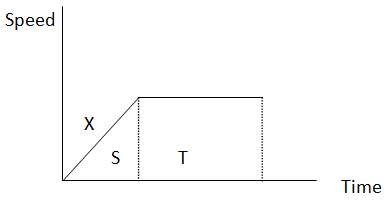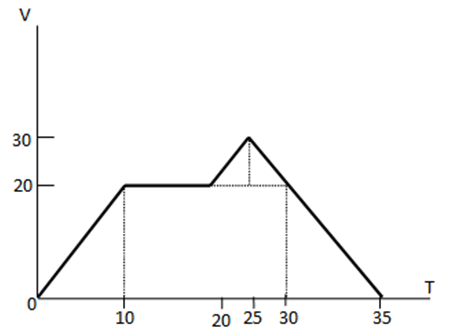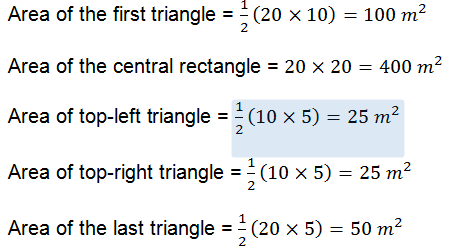
Select the correct answers of the following questions.
1. A car takes 1 hour to travel 100 km along a main road and then ½ hour to travel 20 km along a side road. What is the average speed of the car for the whole journey?
(a) 60 km h-1 (b) 70 km h-1 (c) 80 km h-1 (d) 100 km h-1
Solution

2. How is the motion of a body affected by balanced and unbalanced forces acting on it?
| No | Balanced forces | Unbalanced forces |
| A | Velocity constant | Velocity constant |
| B | Velocity changes | Velocity constant |
| C | Velocity constant | Velocity changes |
| D | Velocity changes | Velocity changes |
Solution
According to Second Law of Motion, when an unbalanced force acts on a body acceleration is produced in the body. Therefore, in the presence of an unbalanced force, the body will not move with constant velocity. Similarly, when the velocity doesn’t remain constant, it will be either increasing or decreasing. So there will be a change in the velocity of the body.
Therefore, both the statements of option (c) are correct. One or both parts are incorrect in the remaining options.
3. When a block of wood of mass 2 kg is pushed along a horizontal flat surface of a bench, the force of friction is 4 N. When the block is pushed along the bench with a force of 10 N, it moves with a constant:
| a) speed of 3 ms-1 | (b) speed of 5 ms-1 | (c) acceleration of 3 ms-1 | (d) acceleration of 5 ms-1 |
Solution
Force of friction always retards the motion of a body. So if the body is pushed with 10 N force and the friction is 4 N, the resultant force acting on the block is 6 N. According to Second Law of Motion,
F = ma. Put the values, 6 = 2a or a = 3 ms-2.
4. The graph illustrates the motion of an object while moving in a constant speed.

Which features of the graph expresses the distance traveled by the object while moving with uniform speed?
(a) Area S (b) Area S + Area T (c) Area T (d) Gradient at point X
Solution
Area S is the area covered when the motion of body is accelerated one. We see from the graph that the line X has an increasing gradient which means the speed of the body is increasing. Similarly, area T is the area covered when the motion of the body is constant. Since we are concerned with the area covered while the body moves with constant speed, therefore, the correct answer is choice (c).
5. A body is traveling with constant acceleration of 10 ms-2. If S1 is the distance covered in 1st second and S2 is the distance traveled in 2nd second, which of the following shows a correct relation between S1 an S2.
(a) S1 = S2 (b) S1 = 3S2 (c) S2 = 3S1 (d) none
Solution
Apply second equation of motion to find both distances,
For the 1st second, S1 = 0 * 1 + ½ * 10 *1 * 1 = 0 + 5 = 5 m
During 2nd second, S2 = 10 * 1 + ½ 10 * 1 * 1 = 10 + 5 = 15 m
Since 3 * 5 = 15, therefore, 3S1 = S2
Note: At the start of 1st second, the body’s initial velocity is 0. At the end of 1st second, or at the start of the 2nd second, its velocity is 10 ms-1. Therefore, in the second calculation initial velocity is 10 ms-1.
Note: Taking the above noted consideration, you can also solve the problem by using 3rd equation of motion.
(6) The journey of a car is shown in the velocity-time graph. How much distance it travelled.
(a) 1250 m (b) 2500 m (c) 3120 m (d) none (of these)

Solution
The approximate diagram of the problem is shown as above. If we are interested in finding the solution, we have to calculate the area under the graph.

Total area = 100 + 400 + 25 + 25 + 50 = 600 m2 (Answer)
Problem 7: Two balls traveling in opposite directions slightly of different masses collide elastically and bounce back. Which of the following exactly shows that relative speed of approach is equal to relative speed of separation? If U is the speed before collision and v is the speed after collision.
(a) U1 + U2 = V1 + V2 (b) U1 – U2 = V1 – V2
(c) U1 + V1 = V2 + U2 (d) V1 + U1 = U2 – V2
Hint: Let one particle is moving with a velocity of 10 m/s and the other is moving with a velocity of 8 m/s in the same direction. The relative velocity is the velocity of one particle with respect to the other. So the relative velocities of the particles are 10 – 8 = 2 m/s.
Since velocity is a vector quantity, it is important to consider its direction. Therefore, if the directions of velocities are opposite, we can take one as positive and the other as negative. In such a case, for example, the relative velocity will be 10 – (-8) = 18 m/s. Consider the example of two vehicles approaching one another on the road. If one is travelling with a speed of 10 m/s and the other as 8 m/s, then they will be approaching one another with a speed of 18 m/s. And if they are moving in the same direction, one after the other, they will be separating one another by 2 m/s.
Solution
Given that

Relative velocity of approach = Relative velocity of separation
(8) A projectile is thrown so that it travels a maximum range of 1000 m. How high will it rise?
(a) 500 m (b) 250 m (c) 400 m (d) none
Solution
Maximum height reached = ¼ (maximum range)
Therefore, height reached = ¼ (1000) m = 250 m.
(9) What does not change when force is applied on a body?
(a) Mass (b) velocity (c) position (d) acceleration
Solution: When force is applied it produces acceleration in it. Ultimately, velocity, position and acceleration of the body will change. However, mass of the body will remain the same.
